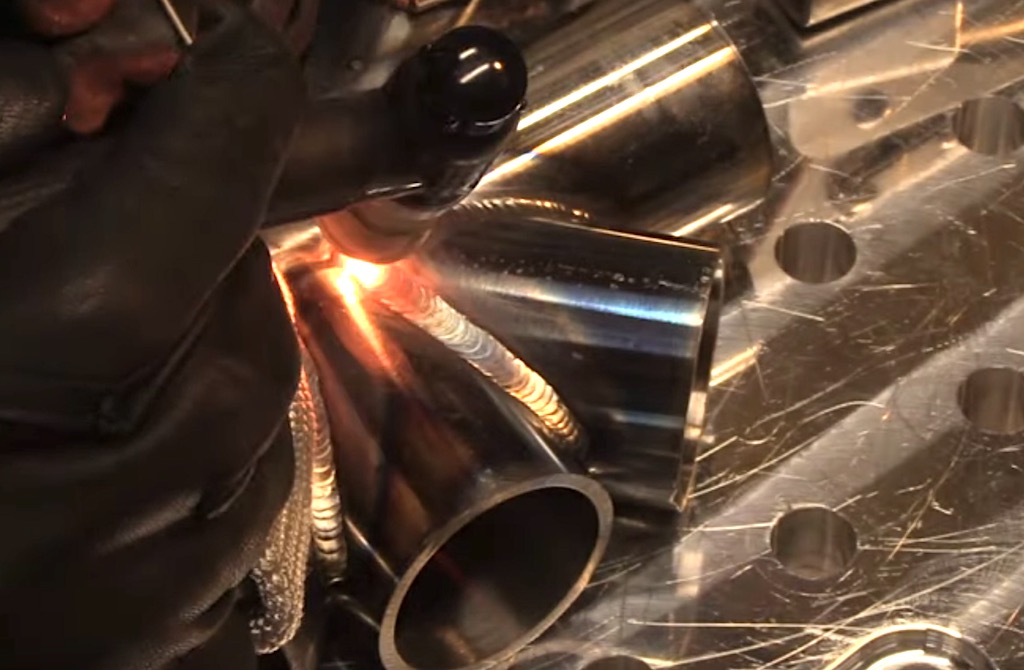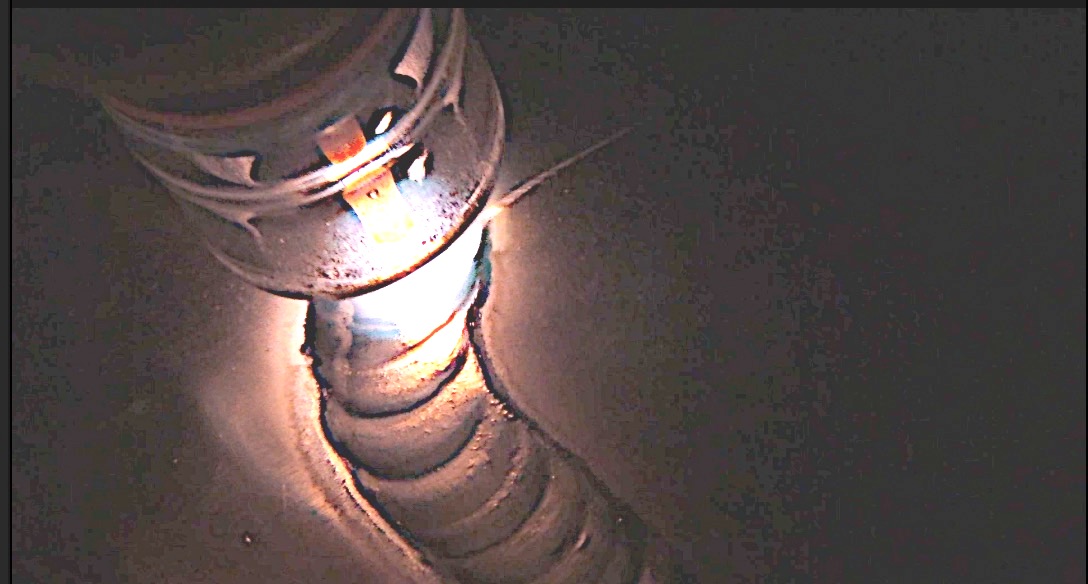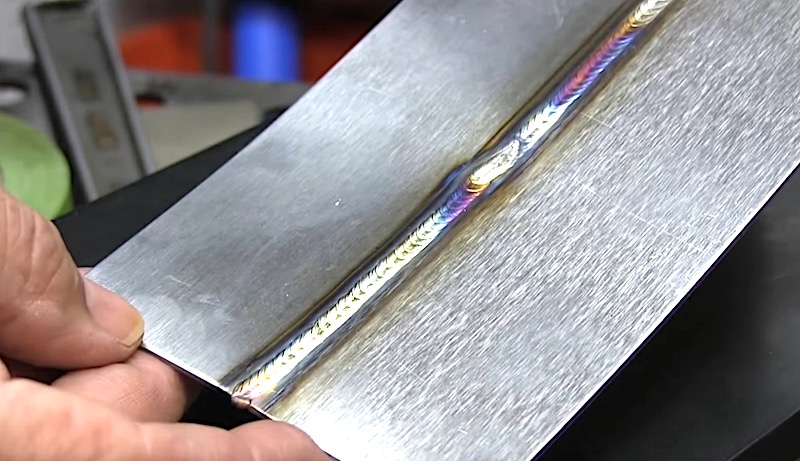What Every Welder Needs to Know
Hey thanks for signing up.
Lets get right to it.
I promised to tell you the main 2 things that every welder should know but probably doesn't
So I will not only tell you, I will show you in a quick down and dirty video
So let me give you the big reveal.
Its going to seem simple and obvious
Here it is.
Heat affects metal
So what right?
You probably already knew that.
So...Lets unpack that a little bit.
Heat affects different metal differently.
There are hundreds of different metal alloys and each can have its own special considerations for welding.
But since the most commonly welded metals are carbon steel, stainless steel, and aluminum….
for this quick , down and dirty video we are going to go over the main welding concerns for each.
The main welding concerns are very different for these 3 different metals.
For example lets take preheating
For both thick aluminum and thick carbon steel and other steels, preheat is often used.
Preheat is where you use a torch or other means to get the metal hot before you weld it.
Its common practice on both thick aluminum and thick steel.
But why?
Even though it is helpful on both, it does very different things to the metal.
heat affects aluminum very differently than it does carbon steel.
Lets take a look at the 3 most commonly welded metals and learn how heat affects each one differently.
First up is carbon and low alloys steels
This includes plain carbon steel as well as higher strength alloys like 4130 chromoly and everything in between.
Low carbon steel also called "mild steel" is a very forgiving metal and because of its low carbon content.
Mild steel typically has only 0.05% to 0.25% Carbon content.
You can heat mild steel red hot and dunk it in ice water and it might not harden at all.
But once you get up to around 0.3% carbon, like with medium carbon steels, that all changes.
...and just for reference, thats 0.3% ...that's 3 tenths of 1 percent.
Cast iron can have upwards of 3 full percent carbon...that's 10 times as much.
The Main way heat from welding affects carbon steels and low alloys steels like 4130 chromoly is that if it gets above a certain temperature...and then cools too quickly, the metal can get hard and brittle.
When a weld is made, a certain area underneath and right next to the weld reaches a high enough temperature to harden from quick cooling.
This area is known as the "heat affected zone" (HAZ).
The more carbon in carbon steel the more likely for the metal to become hard and brittle if it cools too quickly.
Other steels like 4130 chromoly , 4140, and others have other elements in addition to carbon ( like chromium and molybdenum) that cause them to get too hard if they cool too fast.
That is where preheating comes in.
Preheating slows the cooling rate and that in itself can prevent hardening.
There are some other benefits too like driving off moisture and hydrogen and lessening something called thermal shock but slowing the cooling rate is the main thing for Carbon and low allow steels.
One more consideration dealing with welding carbon steels is "free machining carbon steels".
the most common one is 12L14 and the L stands for Lead.
12L14 steel is great for machining and cuts on a lathe like butter.
But Lead is not great for welding.
So use caution and only weld 12L14 for very low stress applications like pressed in fittings that only need to be sealed and where nobody gets hurt if the weld fails.
12L14 mainly comes in round and hex and I only mention it because machine shops love it so when doing work for machine shops you need to be aware of these issues.
Now lets talk about aluminum.
First off there a a few aluminum alloys that should not ever be welded.
At least not by conventional arc welding.
The main one is 7075. Another is 2024
Why ?
Because it will crack. Sometimes immediately , sometimes later.
You don’t want that.
2024 is much less likely to crack right away but is still NOT recommended for welding.
I welded a tote tray out of some 2024 scrap years ago and it help up just fine for many years ...but a tote tray is very different than a ladder that might injure someone if a weld fails.
So if someone wants you to weld an aluminum part that has no welds on it…
And is fastened using only rivets, screws or other mechanical fasteners, it might just be 7075 or 2024. ( a complex item with only rivets or mechanical fasteners is a good clue that the aluminum is not weldable)
You are better off declining the job. (scroll to bottom of page to learn other metals that should not be welded)
(There
are ways to identify aluminum alloys but it usually takes some very
specific acid etch solutions and some practice before you can be sure of
the test results.)
Welding is usually a much more economical way
to fabricate parts that mechanical fasteners so you have to ask
yourself why when you come across a part that is not welded at all.
Good news tho, practically all the other aluminum alloys are weldable.
But…
There are two main issues with welding aluminum
Porosity is one.
And too much softening or annealing of the heat affected zone from welding is another.
And the two issues are related.
Preheating to around 200F will usually help tremendously with preventing porosity (provided the metal is cleaned properly prior to welding.)
But too high of a preheat temp can lower the strength in the weld area ( heat affected zone aka HAZ)
Aluminum
will not change color when it gets hot so there is no good way to tell
how hot you are getting it unless you use temp crayons or an infrared
thermometer gun.
But what happens if you heat a piece of aluminum
to lets say over half way to melting point…like lets say 985 F. (
aluminum melts at around 1200F)
Then you dunk it in ice water.
Will it become hard and brittle ?
Nope
It might distort from the uneven cooling..
But it won’t Harden…
In fact it most likely will be much softer after the heat and quench.
The only ways to Harden aluminum are thru cold working or heat treatment.
Cold working just means rolling, bending, hammering, etc.
Heat
treatments used to Harden aluminum are getting the aluminum up to an
elevated temp that is well below the melt point (350-500f) and holding
it there for an extended period(12-24 hours for a t6 temper)
But what happens when you weld cold aluminum?
Porosity is usually the problem because surface oxides, trapped hydrogen, and surface moisture all contribute to porosity.
Proper cleaning and Preheat help prevent porosity but excessive preheat can cause loss of strength in the heat affected zone.
One of the most commonly welded aluminum alloys is 6061 t6
6061 can be hardened by heat treat and the t6 at the end means solution heat treated then artificially aged.
What that means Is that first the aluminum was heated to an annealing temperature and then quick cooled so that it was soft.
Then
it was artificially aged at an elevated temp in an oven for a period of
time to allow certain phases to develop that make the aluminum much
stronger than annealed aluminum.
Now lets talk about stainless steels....300 series
There are many different grades of stainless but the most common one is 304L.
after that 303, 316, 321 are also common depending on the industry we are talking about.
You can find 304 stainless in breweries, power plants, swimming pool ladders, etc.
304 is one of the most common stainless steels and it is usually welded using 308L filler metal.
Sometimes
its welded without filler metal ( that is called autogenous welding)
and other times its welded using er308L filler . The L stands for low
carbon
What happens if you heat up a piece of 304L stainless until its red hot and then dunk it in ice water?
Not much.
It will not harden like carbon steel will.
That is because 304L has lots of chromium and nickel.
304 is what is known as an 18/8 stainless with roughly 18% chromium and 8% nickel.
while the chromium and nickel make it corrosion resistant, they prevent hardening from heating and cooling.
A common myth in welding is that you shouldn’t speed cool any metal ever.
Not true with stainless.
In fact, speed cooling with forced air can be a good thing to prevent overheating in between weld passes.
The
main way heat from welding affects stainless if that if stainless steel
is held at too high a temp for too long, it can lose its corrosion
resistant properties.
Something called "carbide precipitation" can happen in stainless when it is held a too high a temperature (700 °F to 1500 °F) for too long.
What happens is that chromium particles and carbon particles migrate towards each other and combine to form chromium carbides.
This leaves certain areas in a chromium depleted state and these areas lose their corrosion resistance.
This usually happens at grain boundaries.
That is why it causes something called intergranular corrosion...
And that causes stress corrosion cracking (SCC)
All this does not necessarily mean that low amperage should be used.
In fact, sometimes higher amperage and faster travel speeds are the ticket.
Travel speed has a great affect , but so does the quench factor.
Using techniques that dont keep the stainless too hot for too long help.
Pulse tig, chill bars, and a fast travel speed can all be very helpful in maintaining the stainless properties.
One more thing about Stainless Steels.
A condition known as granulation aka "sugaring" can happen on full penetration stainless welds unless purge gas is used.
Sugarging is not the same thing as carbide precipitation.
Sugaring can be avoided by purging the back side or inside with argon.
Argon gas is the most popular gas used for purging the back side of stainless.
303 stainless is free machining and contains sulfur.
just like the lead in 12L14 free machining carbons steel, the sulfur in 303 stainless enhances machinability.
But Sulfur is not helpful for welding.
What NOT to weld
Even though most metals can be welded, that doesn't mean they can be welded to other metals. Some metals can be welded to other dissimilar metals.
Some Can't.
This seems obvious but I have known of folks who tried to weld aluminum with steel mig wire.
You dont know what you dont know.
- Aluminum should only be welded to aluminum and only with aluminum rods.
- The same goes for magnesium and Titanium.
I am sure there are a few rare exceptions but these are good principles.
So to summarize:
- Heat affects all metals but it affects different metals in different ways.
- The main concern with carbon and low alloys steels is the metal getting brittle from quick cooling
- The main concerns for aluminum are porosity and or too much softening from excessive heat input
- The main concern for stainless is keeping the metal too hot for too long and losing corrosion resistance properties
Every
metal has its own main considerations but since Carbon Steels,
Stainless, and Aluminum are the most commonly welded meals, I decided to
focus on those 3 metal categories.
More to come.
















